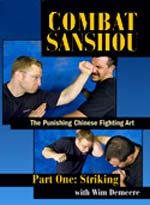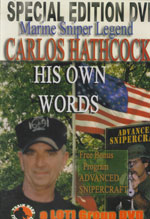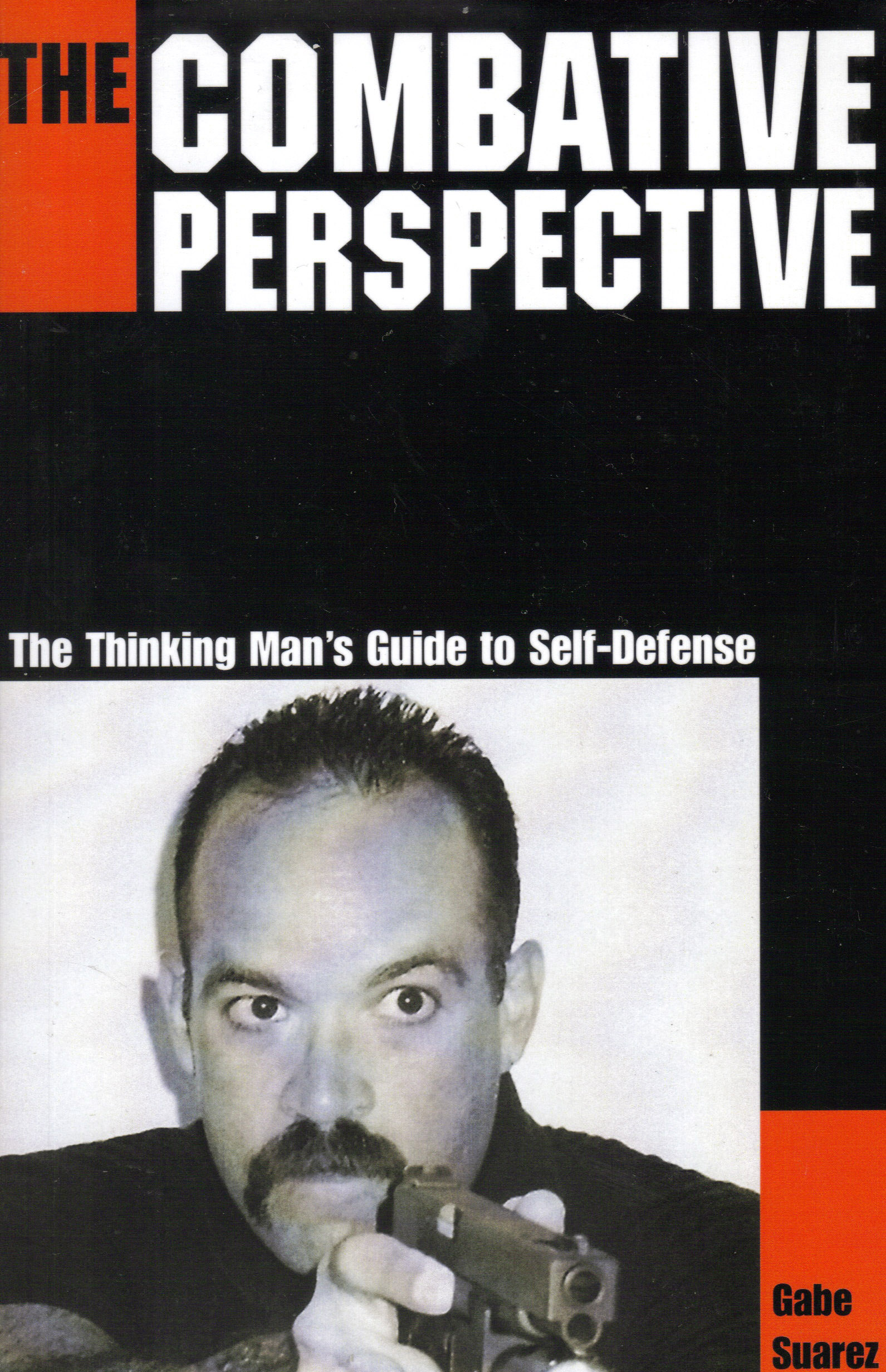Marc MacYoung?
Dianna Gordon MacYoung?
Animal E-list
Crime Avoidance Lectures
Crime Blog
Colorado Classes
Contact Us
FAQs
Hosting A Seminar
Crime Prevention
Expert Witness
Knife Defense
Law Enforcement
Martial Arts
Military
Movie Consulting
Women's Self-Defense
Links
Our Linking Policy
On-line Store
Train with MacYoung
Testimonials
Terms of Use
Topics
of Interest
So
how much does him knowing you could hand him
a smackdown -- without ever breaking into a sweat --
contribute to his willingness to be de-escalated?
The question that started it all
Control Presence
On this page:
Command Vs. Control Presence |
So How Does It Work? |
So What's Our Approach? |
Alpha/Beta Behavior |
Attack Range |
Controlling Where He Attacks |
Counting Coup |
De-Escalation |
END IT NOW! |
Getting Attacked 101
negotiate.htm" onMouseOver="MM_displayStatusMsg('conflict negotiate');return document.MM_returnValue" TITLE="negotiate out at the sharp end">
negotiate In Extremis
Pain As A Motivation |
Secondary Victory | *Shadow
Dancing |
Threat Display
We cannot teach you Control Presence over the Web. However, what we can do is introduce you to some of the elements that make it work. These will make your job -- and life -- easier. It will reduce the number of use of force incidents you find yourself in, the amount of paperwork and your time in IA and court over such events. Better yet, it greatly reduces your anxiety about dealing with violent and out of control people. It does this by enlightening you of the incredible importance that tactical thinking and positioning have on whether or not you will be attacked.
For good or bad, what you say or do has major influence over whether you are attacked. Unfortunately it also has a lot to do with whether you are successfully attacked or not. If you take control of these elements, you can keep from giving the signals that
In a very real sense, Control Presence sending a would-be attacker a message. A message that tells him he cannot succeed by using violence ... therefore, he's better off taking the other (more reasonable option) you are offering. At the same communicating to him that you aren't just confident in your ability to handle him, but you're ready to put him down if he gets stupid.
This is why you are polite and calmly smiling at him ... because you know you have superior firepower. You're so on top of it, you can afford to be polite, calm. reasonable and most importantly, helpful.
So What's Our Approach?
Control Presence is a blending of effective defensive
tactics and what we call 'front line psychology.' By
front line psychology we mean we are more focused on
stopping unacceptable behavior than anything else. Since
we're the ones who are going to be spitting blood if
this continues, we don't care that he fell off his
tricycle when he was four. Our attitude is officers need
something quick, down, dirty and effective to
de-escalate or prevent violence. Therefore our attitude
is "If you ain't cheatin' you ain't trying hard enough."
Although always ready for violence and use of force (the two are not synonymous), in Control Presence everything up to lethal force is a form of negotiate and maneuvering -- so as not to have to use more force. In essence, our attitude is that while we aren't afraid of using force, we hate paperwork. So resolving the situation through out thinking and out maneuvering the violent person saves us that burden.
Here are some of the foundations that Control Presence is built upon.
So How Does It Work?
Before we answer that question, let us ask you one: Why do people become
violent?
Please, take the time to answer that to yourself before reading any further.
We've asked thousands of law enforcement officers that questions and they have all answered correctly ... even though they all answered differently. They usually come up with answers like 'anger, fear, pride, revenge, etc., etc..' Like we said all of these answer are right.
But they are all manifestations of a deeper answer (or if you prefer bigger umbrella answer). We've only had two officers give us the 'collective' right answer.
That is: People become violent because they want something.
And whether it is a momentary emotional choice, a life long pattern or an burst of intoxicated stupidity, violence seems to be the best way to get it. And that is why they will go off.
Control Presence works by identifying
1) pre-attack signals and
2) requirements for an attack
3) what the motive for violence is
By knowing these an officer can not only identify when an attack is about to occur, but send the message that he/she is NOT safe to attack. By this we mean the officer is personally not safe to attack. This is over and above any institutional authority the officer represents.
An additional message is sent that violence won't work to get the criminal/ violent person what he wants. No matter what his goals are for using violence he will be subdued with embarrassing speed and ease. Which is not an idle threat. The same actions that send the message that the officer isn't safe to attack, really do make that person difficult to attack. If the suspect does become violent, the officer can easily and effectively overwhelm him. This is because the officer is subtly controlling and limiting the perp's options for violence -- before (or hopefully without) ever physically engaging.
An experienced and dangerous fighter will recognize this and usually cease. For those situations that do become physical, t the attacker discovers too late that the "opening" that he thought would bring him easy victory is, in fact, a trap. This trap that allows you to easily defeat, control, restrain and remove his will to resist.
Shadow Dancing
Before you follow any other links on this page,
start here. Shadow Dancing is an articulation of
a skill that every cop two weeks out of the academy
starts to develop ... but NOBODY ever talks
about. That's because until now, nobody has had a name
for it. And the best shadow dancers are those officers
who for some reason the troublemakers just seem to calm
down around when they walk in.
Secondary
Victory
Ever wonder why a inmate or perp will decide to fight five officers?
Obviously he's going to lose, but still he forces the incident.
There is a logical reasoning process going on here. If fact, he is
gaining what's called a
secondary victory. Learn about the concept and why it is so
important to keep them from achieving it.
Return to top of page
Counting Coup
The Native Americans of the Plains had a different view of warfare.
One of the greatest displays of courage a warrior could do was to
ride up to, touch and escape without injury from an enemy warrior in
battle. This was called 'counting coup' by French Traders. Although
less of a honor, just bashing in the enemy's head with a club also
gave the warrior coup points. Criminals, in their own way, also
count coup -- especially on officers. Unlike Indian battlefield
tactics,
counting coup is often a lead up to an attack on a person.
Attack Range
The main reasons most officers are surprised when they are attacked
is because they didn't realize their assailant had slipped into
attack range. Learn how to buy yourself precious extra seconds
AND warning that an attack is coming.
Controlling Where He Attacks
BUT, BUT, BUT... isn't the goal to keep from being
attacked? Well, we say that 90% of all situations can be
deescalated, but that still leaves that 10% where it's going to go
physical. So that being the case, why don't you control when and
where he attacks rather than let him choose?
Control vs. Command Presence
Ever notice some people don't like what your
command voice is telling them? We take a look at
this idea and compare it to Control Presence.
Pain As A Motivation
We have a saying "The return trip to good behavior is
always free." In the
Pain as Motivation page we take a look how
inflicting pain at the wrong time can actually put a
perp back onto the fight
De-escalation
No our version of De-escalation isn't asking him "Don't
be violent ... pretty please with a cherry on top?"
Our de-escalation
works based on the idea that he can't get what he wants
by being violent, but that if he works with you he might
get something that is acceptable.
Threat Display
Perhaps one of the most misunderstood aspects of
violence. The
threat display
is designed to keep us from having to engage in physical
violence.
END IT NOW!
The importance of effective
movement on your strategy, tactics and control
presence mindset (as in why he's going to know not to
mess with you).
Alpha/Beta Behavior
As an officer you are constantly called upon to put a
stop to unacceptable behavior. You have to show a little
misbehaving dog that you are the big dog in order to
stop that unacceptable behavior. In the animal world,
this would be being called being an alpha. The problem
is thaus"> alpha really is. So instead of the
situation de-escalating, it escalates.
Getting Attacked 101
Unfortunately, in trying to establish control and
dominance over a situation, there are core mistakes that
an officer can make. Although written for civilians,
here are some handy guidelines on ways not to
provoke an attack.



Emotional Survival for Law
Enforcement
Learn More >
Order Now!

Do You See What I am Saying?
Reading Body Language
Learn More >
Order Now!

Surviving a Street Knife Attack
Learn More >
Order Now!

CQB Clearing Tactics For First
Responders/ Patrol Tactics for 911 Officer
Learn More >
Order Now!

Fighting Dirty
Learn More >
Order Now!

Escape Combatives
Special Bonus Feature
ESCAPE DRIVING
Learn More >
Order Now!

Combat Sanshou: Striking
Learn More >
Order Now!

StressFire
Learn More >
Order Now!

Fighting Footwork of
Kuntao/Silat Volume 2
Learn More >
Order Now!

Tactical Shotgun
Learn More >
Order Now!

Warriors: On Living with
Courage, Discipline and Honor
Learn More >
Order Now!

TACSAFE
Learn More >
Order Now!

Carlos Hathcock: In His Own
Words
Learn More >
Order Now!

The Combat Perspective: A
Thinking Man's Guide to Self-Defense
Learn More >
Order Now!
| About navigating this site | Animal List | Bibliography | Bullies | Burglary while on vacation | Classes in Colorado | Car Jacking | Children and Martial Arts | Child Safety | Criminal Mindset | Cults in MA/SD | De-Escalation | E-mail Dianna | E-mail Marc| FAQs | Have MacYoung speak about crime avoidance | Home Page | Home Defense | Hosting a Seminar | Fear | Five Stages of Crime | Knife Fighting | Legal Issues | LEO/Correctional Officer/EMS | Linking policy | Links | Martial Arts | Photo Gallery | Property Crime | Psychology | Rape | Robbery | Safe Dating | Self-Defense Training | Selling your books/DVDs on NNSD | Seminar Schedule | Stalking/Domestic Violence | Street Fighting | Terms of Use | Testimonials | Train with Marc MacYoung | Who is Dianna Gordon MacYoung? | Who is Marc "Animal" MacYoung? | Victimhood | Workplace Problems | Zero Tolerance | ||
| ? 1998-2008 No Nonsense Self-Defense, LLC. All rights reserved. |